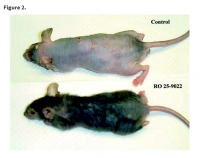johnwester130
Member
- Joined
- Aug 6, 2015
- Messages
- 3,563
This does not seem to me to be an adequate explanation,
" First, Polysorbate, a known cleanser, emulsifier, and surfactant, helps rid the hair follices of the hormone, dihydrotestosterone or DHT. DHT is the testosterone fraction that is believed to trigger male pattern baldness in men."
"Second, Polysorbate is known to trigger histamine release, which increases blood flow and nutrition to the hair follicles."
- This belief that DHT causes hair loss in men is highly questionable. If it were true all old men would have full heads of hair and young men would be bald as they have the highest level of DHT.
- There might be an argument to say that removing localised DHT in the scalp would help for hair loss but that argument is weak and with little evidence IMO. Also if it were the case that its properties as an emulsifier and surfactant are what help remove the DHT and prevent hair loss, than why wouldn't regular shampoo ingredients such as Sodium Lauryl Sulfate (SLS) do the same thing?
- There is evidence to suggest that excess histamine release is the LAST thing you want if you have a balding scalp. There are studies showing that histamine is elevated in scalps of balding men. Danny Roddy has a very well researched article on this, "Anti-Histamines for Pattern Hair Loss".
- Not saying you want zero histamine as it is part of the hair growth cycle however I think there is more evidence that those with balding scalps have too much histamine rather than not enough.
.
I agree.
The real explanation is that it removes sebum which clogs hair follicles on the microscopic level.


